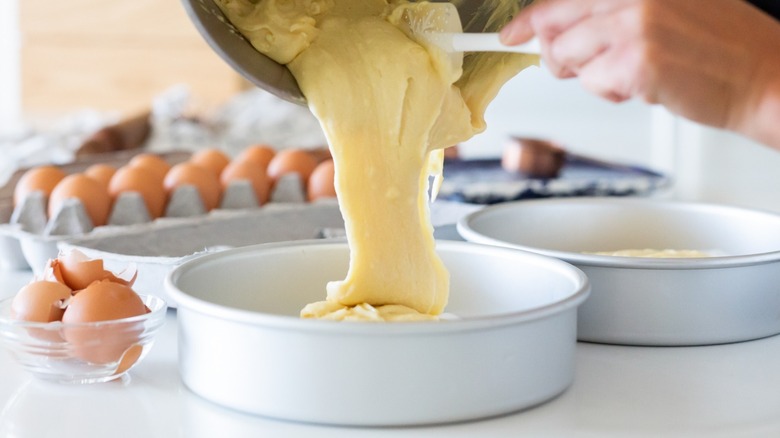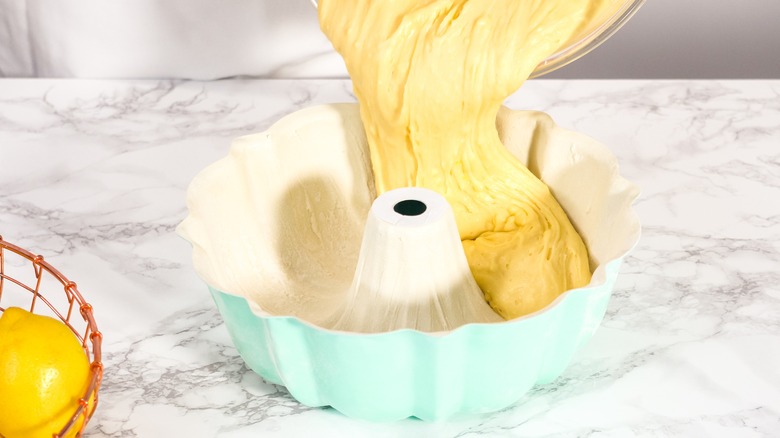Why Your Cake Batter Curdled & How To Fix It
A curdled, split cake batter is not the end of the world. It's simply a matter of science and knowledge of emulsions, which can be notoriously fussy. You want a cake batter that's smooth and glossy, not lumpy and looking like cheese curds — we get it.
Cake batters, like mayonnaise or the Hollandaise on your Eggs Benedict, are emulsions — fat and liquid molecules brought together to form a velvety, smooth substance. Emulsions take time because fats and liquids don't want to intermingle, so you have to coax them, adding a little bit of oil at a time. Most cake batters are reverse emulsions — instead of adding fat (oil) to your liquid (eggs), cake batters cream together butter and sugar and add liquid later. This could be in the form of eggs or milk, per King Arthur Baking.
The most common reason your batter is chunky is cold eggs or milk. Imagine going from a sauna into an ice bath — it's a shock, and your body tenses up. Adding cold milk or eggs to room-temperature butter makes the fat seize into curdles, causing your batter to break. If the recipe calls for room temperature anything, heed that advice! In the U.S. we refrigerate our eggs for food safety reasons. However, getting the eggs out about 30 minutes to an hour before you make your cake batter to allow them to come to room temperature (between 68 and 70 degrees Fahrenheit) won't do them — or your guests — any harm, according to King Arthur Baking.
Split cake batters are preventable
If your cake batter does curdle, it is fixable — no GBBO-level freakouts here — but a surprisingly common mistake when baking a cake. To prevent your cake batter from breaking, you can add a tablespoon or two of the recipe's flour when you add your eggs. The flour gives the liquid something to cling to and binds more easily to the fat. If your batter is already broken, you can add a tablespoon of flour — from the recipe, not extra flour — at a time to bring the emulsion back into line, but go slowly. If it just won't come back together, you can proceed anyway or start again. A word of caution though — if you add more flour than the recipe calls for, your cake will have a dense texture instead of light and airy.
Alas, cake batter still breaks, regardless of the temperature of your ingredients or if you're a professional or home baker, but it's totally useable, don't worry! The results might be a bit denser than if the batter hadn't split, but it will still taste great. If you're worried about the texture and need perfection, bake it as usual and use it for cake pops or a fun crumble topping for ice cream or brownies, so your hard work and ingredients don't go to waste.

